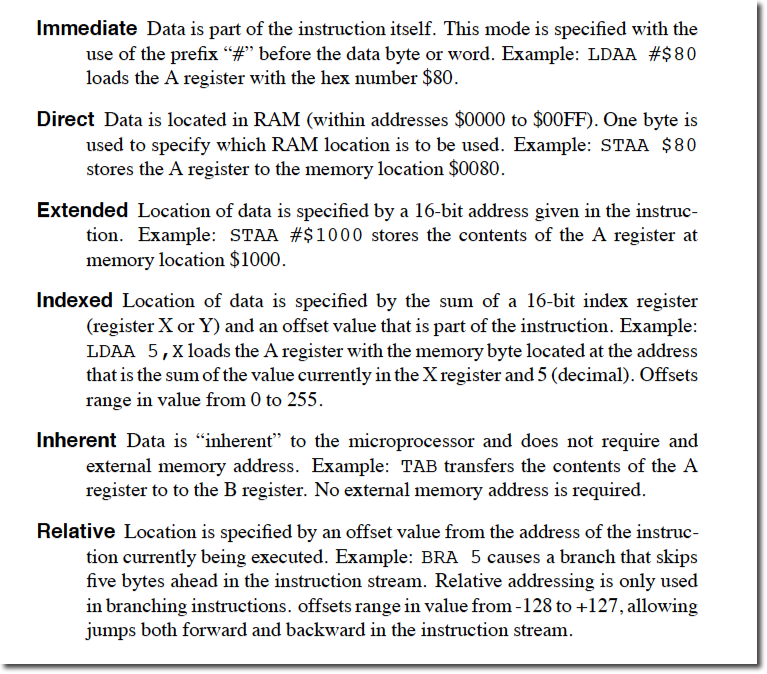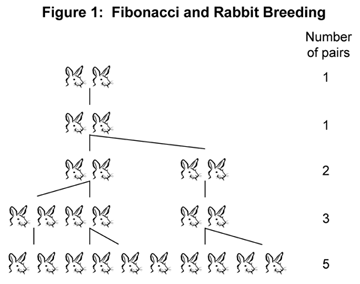Difference between revisions of "CSC270 Exercises on Assembly Language"
(→Exercise 2) |
(→Exercise 7) |
||
| (10 intermediate revisions by the same user not shown) | |||
| Line 24: | Line 24: | ||
==Exercise 5== | ==Exercise 5== | ||
| + | [[Image:FibonacciRabits.png|200px|right]] | ||
* Write a program that computes the first 5 terms of the fibonacci sequence, assuming that your program starts with 5 variables that all zero. | * Write a program that computes the first 5 terms of the fibonacci sequence, assuming that your program starts with 5 variables that all zero. | ||
* Assemble it. | * Assemble it. | ||
* How many cycles? | * How many cycles? | ||
* How many bytes? | * How many bytes? | ||
| + | <br /> | ||
| + | |||
| + | <br /> | ||
| + | |||
| + | <br /> | ||
| + | |||
| + | <br /> | ||
| + | |||
| + | <br /> | ||
| + | |||
| + | <br /> | ||
| + | |||
| + | <br /> | ||
| + | |||
| + | <br /> | ||
| + | |||
| + | <br /> | ||
==Pause== | ==Pause== | ||
* Let's learn about ''direct addressing mode'' | * Let's learn about ''direct addressing mode'' | ||
| + | * The excerpt below is taken from [http://www.google.com/url?sa=t&rct=j&q=&esrc=s&source=web&cd=1&ved=0CCYQFjAA&url=http%3A%2F%2Fciteseerx.ist.psu.edu%2Fviewdoc%2Fdownload%3Fdoi%3D10.1.1.126.6765%26rep%3Drep1%26type%3Dpdf&ei=piNyT7mpE-ru0gH_lrnLAQ&usg=AFQjCNGc-zkqp3OzNxE4Ou2FCdaLOyUEWQ&sig2=EyTqPc-9fn63o99ocK6n0w ''Introduction to 6811 Programming''] by Fred G. Martin. | ||
| + | <br /> | ||
| + | <center>[[Image:6811AddressingModes.png|700px]]</center> | ||
| + | <br /> | ||
| + | <br /> | ||
| + | ==Exercise 6== | ||
| + | |||
| + | * Back to Exercise 4. Go through each instruction and identify the different addressing modes you used for each instruction. | ||
| + | |||
| + | ==Exercise 7== | ||
| + | |||
| + | * Analyze the program below and make it shorter and/or faster. Your program should compute the same result as the original program. | ||
<br /> | <br /> | ||
| + | <source lang="asm"> | ||
| + | |||
| + | org 0 | ||
| + | jmp start | ||
| + | |||
| + | a db 0 | ||
| + | b db 0 | ||
| + | c db 0 | ||
| + | |||
| + | start: ldaa a | ||
| + | inca | ||
| + | staa a | ||
| + | ldaa b | ||
| + | inca | ||
| + | inca | ||
| + | staa b | ||
| + | ldaa c | ||
| + | inca | ||
| + | inca | ||
| + | inca | ||
| + | staa c | ||
| + | jmp start | ||
| + | |||
| + | </source> | ||
<br /> | <br /> | ||
| + | |||
<br /> | <br /> | ||
<br /> | <br /> | ||
| Line 44: | Line 99: | ||
<br /> | <br /> | ||
<br /> | <br /> | ||
| − | < | + | <onlydft> |
| + | <code><pre> | ||
| + | a db 0 ; | ||
| + | b db 0 | ||
| + | c db 0 | ||
| + | |||
| + | start: ldaa #1 ; 86 01 2 cycles | ||
| + | staa a ; 97 00 3 cycles | ||
| + | inca ; 4C 2 cycles | ||
| + | staa b ; 97 01 3 cycles | ||
| + | inca ; 4C 2 cycles | ||
| + | staa c ; 97 02 3 cycles | ||
| + | jmp start ; 7E 00 03 3 cycles | ||
| + | ;; ----- ---------- | ||
| + | ;; 13 bytes 18 cycles | ||
| + | |||
| + | |||
| + | |||
| + | |||
| + | </pre></code> | ||
| + | </onlydft> | ||
[[Category:CSC270]][[Category:6811]][[Category:6800]][[Category:Exercises]] | [[Category:CSC270]][[Category:6811]][[Category:6800]][[Category:Exercises]] | ||
Latest revision as of 09:26, 2 April 2012
--D. Thiebaut 16:20, 27 March 2012 (EDT)
Contents
Learning Assembly Through Exercises
Exercise 1
- Write a program that uses 3 byte variables, a, b, and c. The variable are initialized before the program starts with the values 2, 5, and 0, respectively.
- The program will add up the contents of the variable a to that of b and store the result into c. Only c will change.
Exercise 2
- Assemble the program of Exercise 1
- How many bytes does it contain?
- How fast will it go from beginning to end, assuming each 6811 cycle is 1 µsecond?
Exercise 3
- Same as Exercise 1, but for the Pentium.
- Assuming that the Pentium runs at a clock speed of 3 GHz, how many times could the program run on the Pentium while the same program run on the 1MHz 6811?
Exercise 4
- We want to compute Y = a + b - c + 3, where Y, a, b, and c are byte variables.
- Write the program that performs this operation.
- Assemble the program
- Count the total number of cycles it will take to run, and the total number of bytes it will use up in RAM.
Exercise 5
- Write a program that computes the first 5 terms of the fibonacci sequence, assuming that your program starts with 5 variables that all zero.
- Assemble it.
- How many cycles?
- How many bytes?
Pause
- Let's learn about direct addressing mode
- The excerpt below is taken from Introduction to 6811 Programming by Fred G. Martin.

Exercise 6
- Back to Exercise 4. Go through each instruction and identify the different addressing modes you used for each instruction.
Exercise 7
- Analyze the program below and make it shorter and/or faster. Your program should compute the same result as the original program.
org 0
jmp start
a db 0
b db 0
c db 0
start: ldaa a
inca
staa a
ldaa b
inca
inca
staa b
ldaa c
inca
inca
inca
staa c
jmp start
